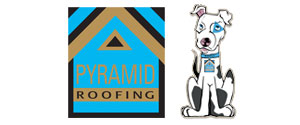- Do you subscribe to Dharma Dog Training’s Newsletter? You should.
- A Unique Campaign from The Humane Society of the United States
- Rabid bats in Omaha- Stay safe, prepared with these tips
- Springtime Activities in Omaha
- Mill Dog Monthly from Bailing Out Benji
- World Spay Day, Legislative Alert in Nebraska
- Attend the Nebraska Rescue Council’s monthly meeting this Saturday
- Five Hard-to-Ignore Reasons to Adopt!
- Paws in Pink to Benefit Breast Cancer Foundation
- VCA, Inc. Acquires MidWest Vet Specialists from Kansas State University
Pet hospice now an option thanks to Paws to Angels
Kate Moore and Terry Branson have been funeral directors for much of their lives. Between the two, they have over 80 years of experience in the field. Upon selling their Texas funeral home, they had a few months to decide what was next. Being animal lovers, and having been through a less-than-perfect experience when the family dog was euthanized, it was decided that they would embark upon a new life as pet hospice and palliative care providers. Their new business became Texas’s first complete end-of-life pet care service in 2009.
The couple now advises other end-of-life care pet businesses around the country on becoming hospice and palliative care providers. After training with Moore and Branson, Omaha’s Cherie Fry, owner of Paws to Angels Pet Loss Center, now has Nebraska’s first complete end-of-life care facility. Cherie is proud to have this distinction and “honored to offer pet hospice, a meaningful and compassionate end-of-life care service.” She’s made a difference in the area through her end-of-life care already, but this final piece to the service she provides assures her clients that every need their pets have at the end of life will be taken care of. Along with the grief support she already provides, she and a team of veterinarians make the final transition for pets less stressful, more comfortable and, as her motto goes, “more loving, respectful and dignified.”
Nearly all of us have had a family member fall ill with the threat of death being imminent. Initially, we treat illness with the hope of recovery, but that is not always a realistic expectation. In humans whose life expectancy is six months or less, or when a prognosis changes for the worse, options like hospice care are available and common practice. Hospice care services for humans include, but are not limited to, pain control, symptom management, the use of life-sustaining medical equipment, various therapies, admission to a care facility and intubation. Hospice care is meant for people whose lives are very nearly over.
Palliative care, or symptom treatment, for humans is quite similar to hospice and is another measure that aims to improve the quality of life for those who are ill. Palliative care, according to the Nebraska Methodist Health System, is appropriate when symptoms become hard to manage, conditions decline and other treatment methods are proven ineffective. Palliative care is available in hospital settings for anyone, regardless of life expectancy.
In the pet world, things are a bit different. The two go hand in hand. “There is no difference,” Moore says. “The goal is to keep pets comfortable in their homes for as long as possible.” Sometimes, palliative care can keep pets alive and comfortable for a period of time deemed necessary for a family. In one instance, Moore and Branson had a client whose dog, Trudy, was nearing the end, but her dad was deployed in the Middle East. The soldier wasn’t due back for another month. Through palliative care, the dog was alive long enough to say goodbye- it even got another 58 days to spend with the family.
Another difference between hospice and palliative care between humans and animals is that care for pets, including euthanasia, should be administered in the pet’s home. “It’s best for animals to be comfortable and in a familiar environment,” Moore says.
A consensus between Moore, Branson and Cherie Fry tells of the big difference between treatment and services provided between humans and animals at the end of life. In humans, palliative care and hospice are provided by clinicians. Doctors and nurses care for a patient from the time they enter the hospital and until death. The process for them ends when a heart stops beating. In end-of-life care for animals however, especially when dealing with a center like Paws to Angels or the aforementioned couple’s center, “Beyond the Rainbow,” things are different in that care starts at the moment an owner realizes a pet’s health has changed and ends whenever the owner needs it to end. Let me explain…
Moore says there are three days in the life of a pet owners that are unforgettable. First, the day one gets a new pet is so incredibly great. We spend time building a relationship, becoming companions and loving each other. Secondly, there comes a day when an owner realizes that his or her animal is not quite the same. “One day, out of nowhere,” Fry says, “you look and your dog’s face has grown white. They’re getting old.” This second day changes the game for owners. The third unforgettable day is the day our beloved companions “cross the rainbow bridge.” Saying goodbye is always hard, but it can be especially hard with animals. That’s why Paws to Angels is here- to help with the grieving process and provide any other service that will help an owner respectfully and lovingly say goodbye.
The second day is potentially the day where Cherie comes in. Realizing that your pet may be approaching an age where he or she just isn’t the same and knowing he or she won’t be around forever is tough. Luckily, Cherie is an expert in grief support. From that point, through the process of letting go, and well after, Cherie is available for whatever it is an owner needs to get through. “It’s more than a service,” she says, “it’s a relationship we build.” Doctors are not trained extensively in grief support like Cherie is. Nurses aren’t going to field your phone calls weeks after a loved one has died. That’s not part of their job description. It is, however, THE job description for Cherie. Whatever it takes, however she can help, she’s there for grieving pet owners.
The clear cut difference between traditional pet euthanasia and the kind that can be provided with Cherie’s palliative and hospice care is in the approach. A traditional approach to pet euthanasia is very clinical. A sedative is given to the animal and it works for a short time. A catheter goes into the animal, there’s an “are you ready?” followed by a few moments to say goodbye then the final injection is given. A more caring approach, Cherie says, is in total end-of-life care like she provides. A prolonged sedation gives pet owners more time with their animals for one. Secondly, as she’s a chaplain, so if the pet owners wish, a blessing can be spoken. These words often help pets and pet parents feel a bit better about the end and celebrates the life built together. The poet, Thomas Lynch says: “the clergy takes their part in death. Let them take their best shot. If they are ever going to make sense to you, now is the time.” Even if you aren’t a religious person, a blessing can’t make things hurt any more than they already do, I guess he’s saying. What Cherie is saying is that you now have options, which is a good thing.
I recently read an article about a doctor who had a patient with terminal cancer. The man was in his mid-thirties and had young kids. The doctor was approached by his patient and advised to break the news to the family. The doctor said something to the effect of, “Me? I’m not equipped to do this!” From that moment, the doctor starting spreading awareness in the medical community about the importance of compassionate people who are trained to do such things. It’s revolutionizing the way the medical hierarchy works. Upon reading this, I myself realized that the importance also extends to our medical and emotional dealings with the human and pet dynamic. The numbers don’t lie. Most American families have a pet. Most who have a pet call themselves “mom” or “dad” to the animal. Losing a pet is often the most traumatic thing a person will face in childhood or adolescence. “People have baggage,” Moore says. “Pets don’t.” I suppose that one thing that makes losing a pet different. Luckily, people like Moore, Branson and Cherie have already realized the need for trained pet loss professionals and have taken action.
Branson’s story as a provider of palliative and hospice care started when his own dog came to the end of its life. A regretful and painful experience (one that was not at all compassionate or satisfying) with a veterinarian and the administration of euthanasia drove him to make the process better for others. His vet “gave him a minute” with his pup, asked coldly “if he was ready,” and instructed him to “pull around back and wait” until the process was over so Branson could retrieve his pet’s body. Moore and Branson also wondered about the idea of pet care before this experience. There were many times when, for example, the two found themselves going into a home where a death has occurred, and as they were taking the body as part of their funeral director duty, first responders would be leaving with a surviving pet. As they’d complete that task, the couple would ask themselves with concern what would happen to the animal. Now, after all their experience, life is dedicated to helping pet owners and training pet loss specialists in assisting with palliative and hospice care for animals.
Grief support (and support in general) is supplemented by informational and educational materials that pet owners receive when becoming clients of Paws to Angels. Among the pamphlets that are dispersed are narratives like “Where did Fluffy Go? Explaining Death to Children,” “Do Animals Grieve…Fact or Fiction?” and “The Grieving Pet Parents Bill of Rights,” a document that explains to pet parents that they have the right to feel grief, be overwhelmed by the intensity of grief, to understand feelings to be normal and to express grief in a unique way within one’s own time frame. There’s no doubt that care is given, even from that “second day,” until those who have suffered a loss have found their way through the grief process.
Now trained in palliative and hospice care, Cherie is truly a specialist in total end-of-life pet care. “I care for a pet’s health and help heal humans,” she says. Her hospice and palliative care service started recently with a shih tzu/poodle mix named Oscar. As I was wrapping up my interview with the gang at Paws to Angels, Oscar entered with his mom. She’d recently lost her husband and Oscar, now 13, is having trouble with stairs, his vision and more. Cherie will surely guide Oscar through his journey, but she’s as concerned with his mom and her well-being. Cherie knows the hurt that comes with the loss of a pet; in fact, she is starting her palliative and hospice care service in memory of Mollie, a previously passed pup.
One of my favorite authors, who happened to be a funeral director in Michigan, is the previously mentioned Thomas Lynch. Throughout his book The Undertaking, he repeats the mantra he lived by as a man of the dismal trade: “Care for the living by caring for the dead.” This philosophy is flawless for a funeral director or pet loss specialist like Cherie and pet owners can take comfort in the fact that Paws to Angels is here to do just that.
If you are wondering about end-of-life pet care, know that there are options for you. Paws to Angels can help you make decisions and recognize signs that will aid you in the process. Cherie can help in many ways. Sometimes owners wait too long to consider palliative or hospice care- she can help guide owners to the right path. Other times, pets are ready to go while parents are not. Cherie can assist pet parents of the best way to move forward. “Our job is to prepare them for the transition, support them and bring them to the decisions they need to make,” she says.
We all know matters like these are tough, but many don’t know how tough they can be until they come. Life is a team effort- know that there are people and options out there that can support you and your pets during this transition period. To read more about the end-of-life services Cherie provides, please visit the Paws to Angels Web site here.
Related Posts
Latest News
-
3 Tips for Pet Owners on Training Rescue Dogs
Owning a rescue dog can take some work compared to...
- Posted 3 weeks ago
- 0
-
Choosing the Right Pet for Your Lifestyle
Are you thinking about getting a pet but unsure what...
- Posted 1 month ago
- 0
-
How to Make Your Rescue Pet as Comfortable as Possible
Did you bring home a new pet from a shelter...
- Posted 2 months ago
- 0
-
How Having A Pet Can Change Your Life
Having a pet can open your heart in ways that...
- Posted 7 months ago
- 0
-
How To Improve The Life Of Your Senior Pet
Do you have an elderly fur baby and want to...
- Posted 7 months ago
- 0
-
Springtime Activities To Enjoy With Your Furry Friends
Are you preparing for warmer weather and want some ideas...
- Posted 8 months ago
- 0
-
Pros And Cons Of Microchipping Your Pets
Have you considered whether your pets should be microchipped and...
- Posted 9 months ago
- 0























You must be logged in to post a comment Login